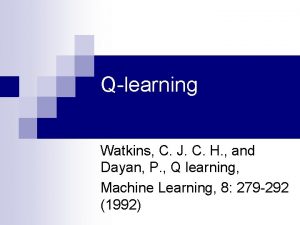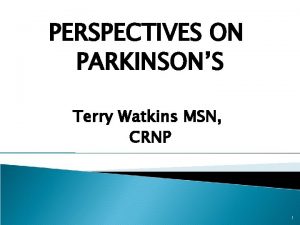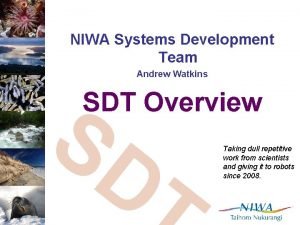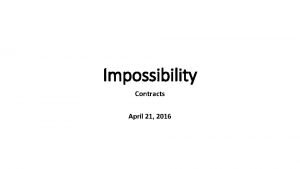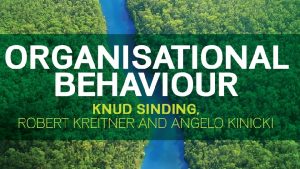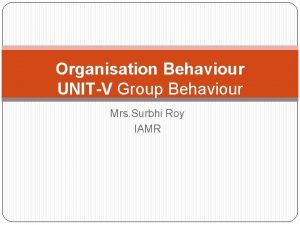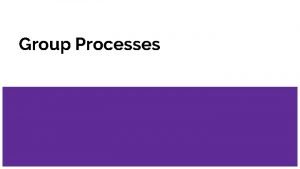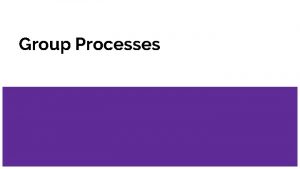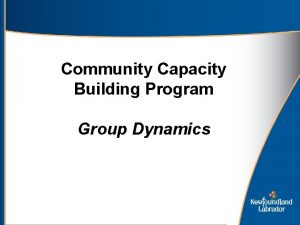Sociometers Measuring Group Dynamics Karren Watkins Andrew Knight

















- Slides: 17

Sociometers: Measuring Group Dynamics Karren Watkins Andrew Knight Research Associate Assistant Professor of Organizational Behavior Olin Business School Washington University in St. Louis

The New Science of Building Great Teams, Alex “Sandy” Pentland, 2012 People Analytics, Ben Waber, 2013 Sociometric badges: Using sensor technology to capture new forms of collaboration, Kim et al. , 2012 Secret Signals, Mark Buchanan, 2009

What is a Sociometer? Microphones: Speech Bluetooth: Proximity Infrared: Face-to-face Accelerometer: Movement

What do they measure? Voice and Conversation Patterns - Individual: Pitch, volume, emphasis - Group: Turn-taking, dyadic engagement, conversation flow - NOTE: By default, they do not record raw audio Postural Movement - Individual: Activation - Group: Mimicry Influence Network Interactions - When and where face-to-face connections happen

Sociometers & Management Research Dyadic Interactions Small Group Dynamics Large Group Dynamics • From salary negotiations to job interviews to sales pitches • Honest Signals, Pentland, 2010 • Another Idea: Turn-taking and Affect E. g. : Is turn-taking in boss-subordinate meetings predictive of postmeeting affect?

Sociometers & Management Research Dyadic Interactions Small Group Dynamics Large Group Dynamics • Relating conversational turn-taking to group intelligence: • Evidence for a Collective Intelligence Factor in the Performance of Human Groups, Woolley et al. 2010 • Another idea: Vocal Engagement and Status Differences E. g. : How do conversational & physical mimicry contribute to the development of team cohesion and coordination?

Sociometers & Management Research Dyadic Interactions Small Group Dynamics Large Group Dynamics • Using network information as a measure of social capital: • Measuring social capital in creative teams through sociometric sensors, Gloor et al. , 2012 • Another Idea: Influences on Informal Network Changes E. g. : How do patterns of informal interaction between different departments change after a physical relocation?

How Do I Use Them? • • Put on correctly, turn it on Sociometers record data Turn it off Import data into Sociometric Solutions proprietary software: Data. Lab • Export to excel file • Process excel file into usable data using computer coding } Easy for participants!

Image 1: Sample Speech Profile Tab from Export File

Karren Team Meeting: 2: 10 p. m. , June 27, 2013 Speaking Length Engagement Average speaking length (seconds): Karren S A M 0. 4 1. 2 2. 3 Your engagement with your other team members appears slightly unbalanced. 7. 2 M Your average speaking segment length much less than the average (2. 8 s) for your group and generally short. Speaking A S 34% 43% 23% Volume Balance Listening -120% -100% -80% -60% -40% -20%0% 20%40%60%80%100% You spoke 4% of the time, which is extremely low. You are talking more quietly than the rest of your group. Pacing Your contributions appear evenly spaced throughout the conversation but are very infrequent. 1 16 31 46 Minutes 61 76 91 Image 2: Sample Beta-version Sociometric Feedback Report

Are Sociometers Reliable? Valid? • Conversational Scene Analysis, Basu, 2002 • Toward a Social Signaling Framework: Activity and Emphasis in Speech, Stoltzman, 2006 • Currently analyzing validation data of the speech detection and attribution feature

Figure 1: Differences Between Human and Sociometer Speech Recordings Table 1: Correlations Between Human and Sociometer Speech Recordings

What Do I Need? • Sample Data – the data may look different than you expect, this will allow you to gauge usefulness for your project • Coding Resources – the data in the output files is not ready to be analyzed and to prepare it manually would be impeding • Time o For Training - before any data collection, you should plan to devote at minimum a month to become familiar with the process o For Piloting – to know what how environmental factors may affect your data, pilot testing should be done before each project

Thank you!

APPENDIX

Sources • T. Kim, E. Mcfee, D. Olguin, B. Waber, A. Pentland. Sociometric badges: Using sensor technology to capture new forms of collaboration. Journal of Organizational Behavior, 2012. • A. Pentland. The New Science of Building Great Teams. Harvard Business Review, April 2012. • M. Buchanan. Secret Signals. Nature, January 2009. • B. Sheridan. A Trillion Points of Data. Newsweek, March 2009. • B. Waber. People Analytics. Pearson Education, Inc. 2013. • J. L. Lakin and T. L. Chartrand. Using Nonconscious Behavioral Mimicry to Create Affiliation and Rapport. Psychological Science, 2003.

Sources (cont. ) • A. Pentland. Honest Signals. The MIT Press. 2010. • A. W. Woolley, C. F. Chabris, A. Pentland, N. Hashmi, T. W. Malone. Evidence for a Collective Intelligence Factor in the Performance of Human Groups. Science, 2010. • P. A. Gloor, F. Grippa, J. Putzke, C. Lassenius, H. Fuehres, K. Fischbach, D. Schoder. Measuring Social Capital in Creative Teams Through Sociometric Sensors. Int. J. Organisational Design and Engineering, 2012. • S. Basu. Conversational Scene Analysis, Doctoral Thesis, Department of Electrical Engineering and Computer Science, Massachusetts Institute of Technology, 2002 • W. T. Stoltzman, Toward a Social Signaling Framework: Activity and Emphasis in Speech. Doctoral Thesis, Department of Electrical Engineering and Computer Science, Massachusetts Institute of Technology, 2006
 Karren maar meaning
Karren maar meaning Watkins block
Watkins block Watkins creek franklin tn
Watkins creek franklin tn Q-learning watkins
Q-learning watkins Abraham watkins
Abraham watkins Jeannie watkins princess cruises
Jeannie watkins princess cruises Abraham watkins
Abraham watkins Cassandra watkins
Cassandra watkins Bell hooks engaged pedagogy summary
Bell hooks engaged pedagogy summary Stees v. leonard
Stees v. leonard Tony watkins
Tony watkins Abraham watkins nichols sorrels agosto & friend
Abraham watkins nichols sorrels agosto & friend Jeannie watkins
Jeannie watkins Sherron watkins
Sherron watkins Dynamics crm user group
Dynamics crm user group Function of group dynamics
Function of group dynamics What is group dynamics in organisational behaviour
What is group dynamics in organisational behaviour What is group dynamics in organisational behaviour
What is group dynamics in organisational behaviour



